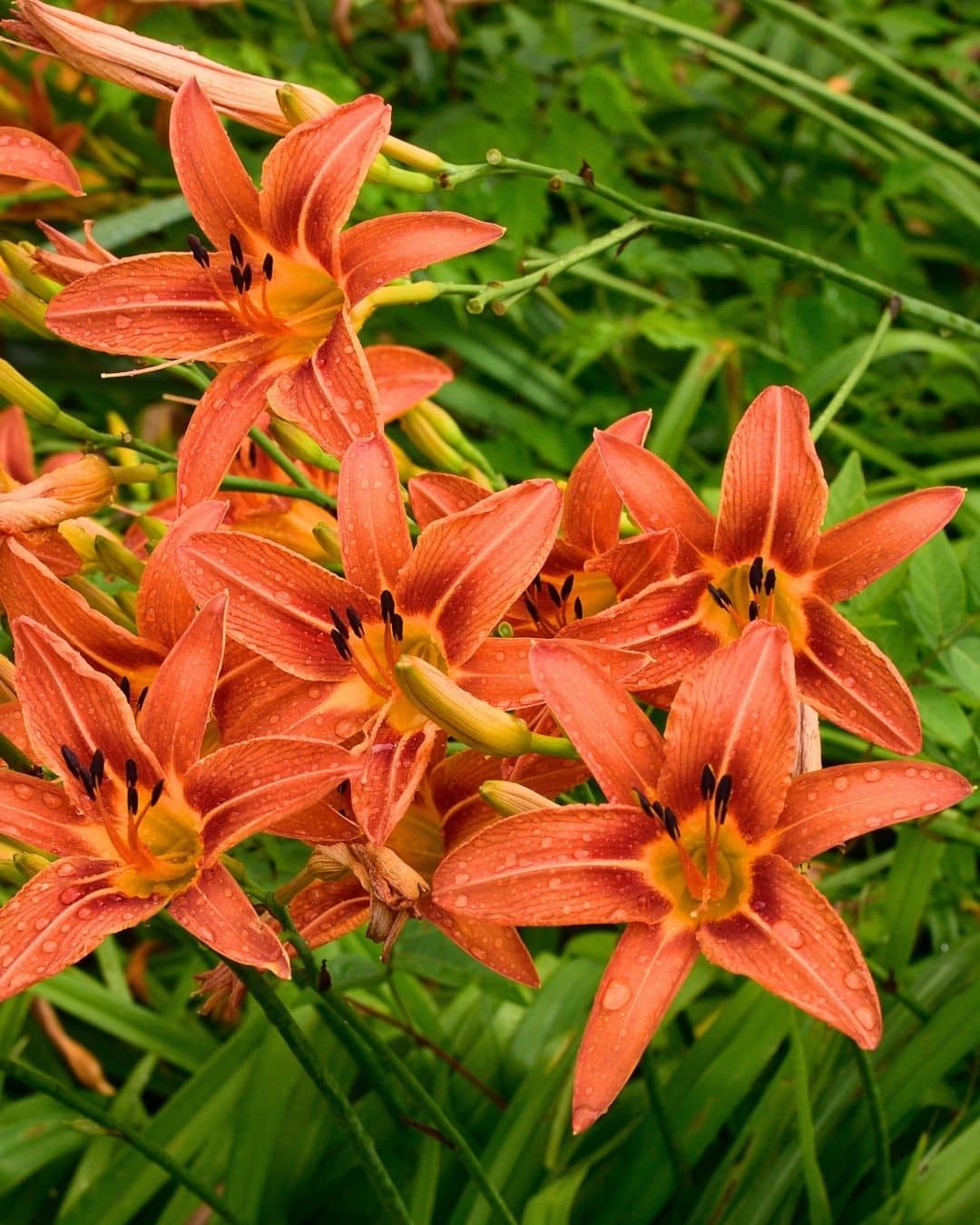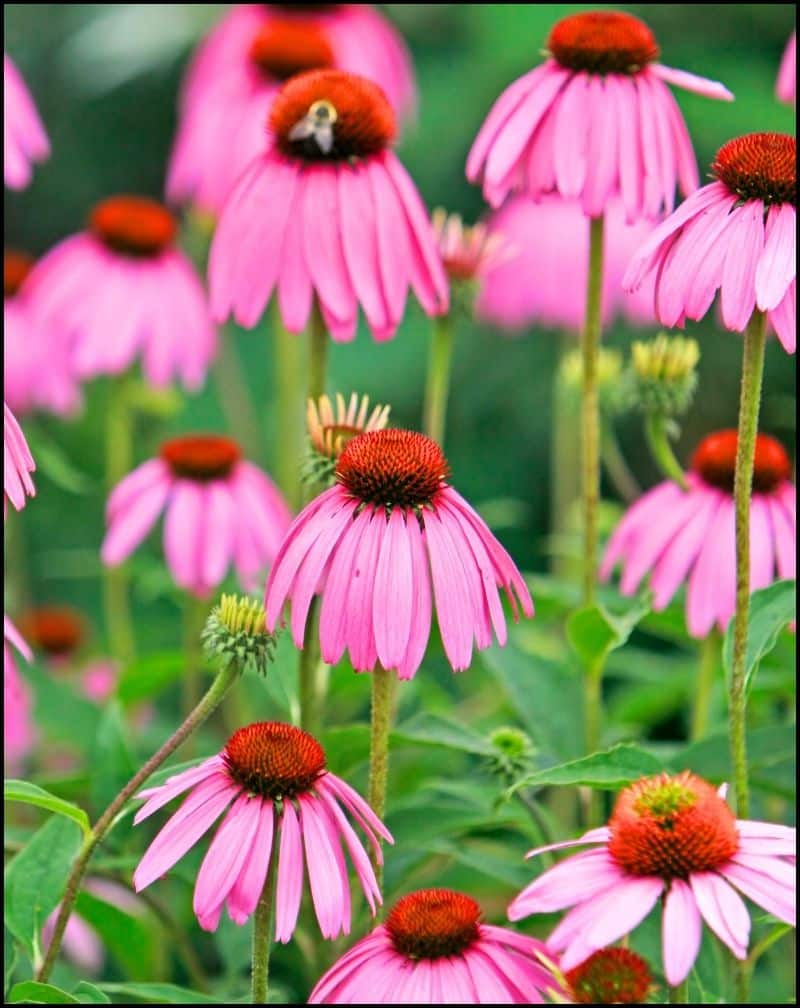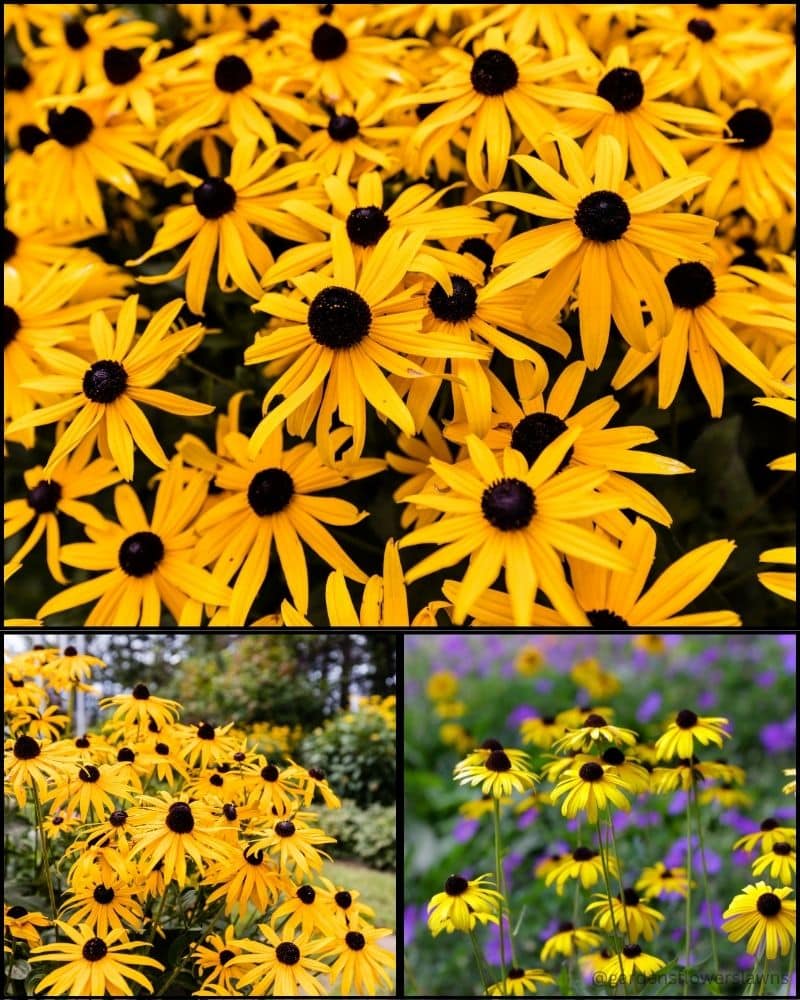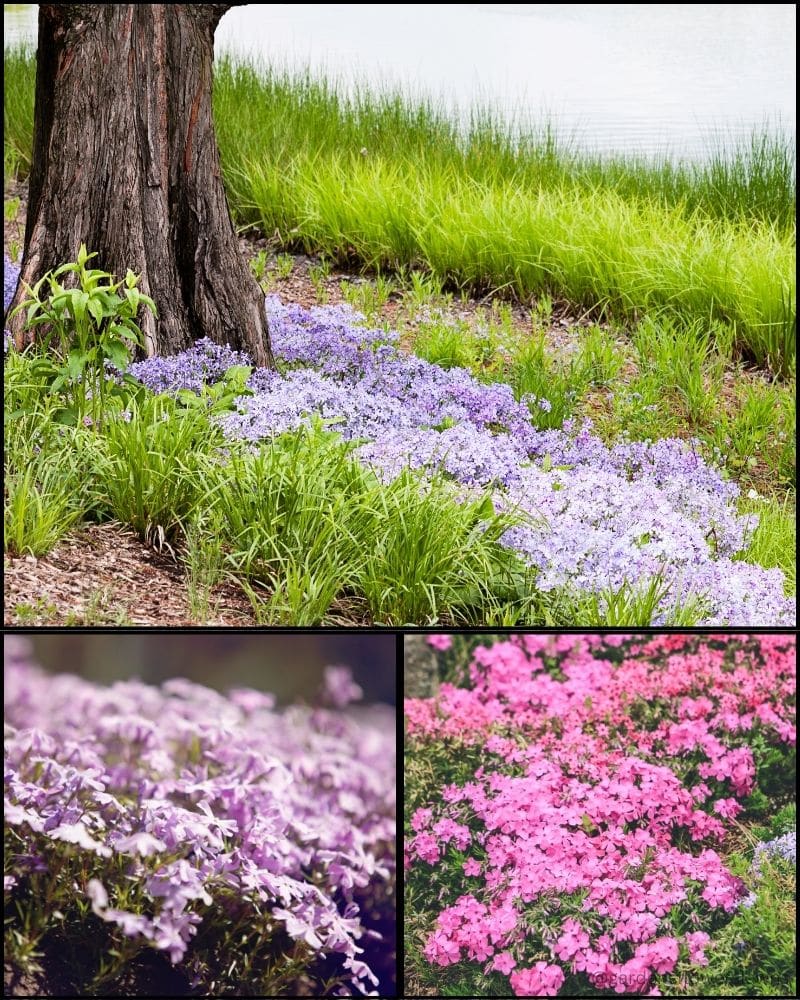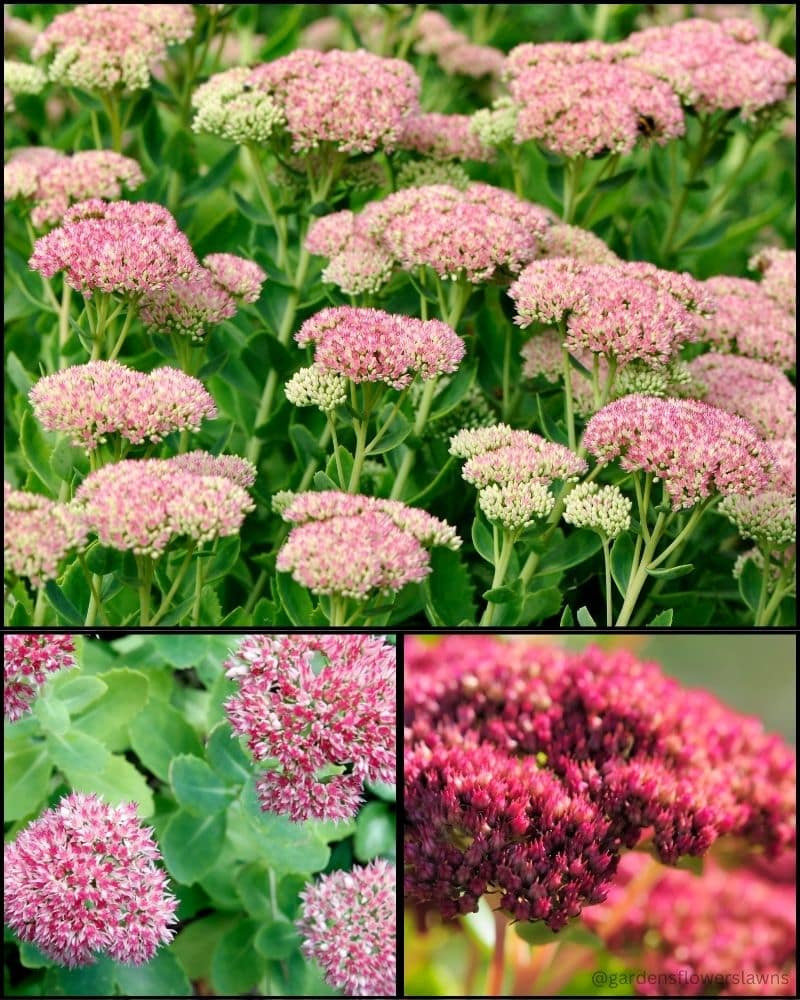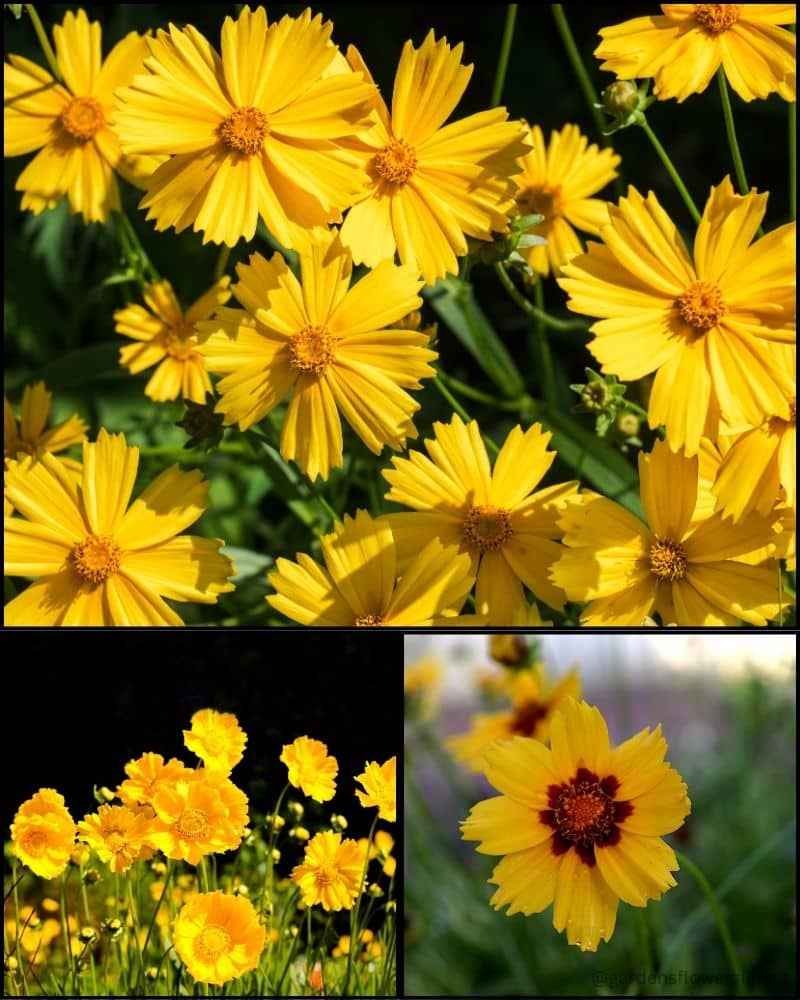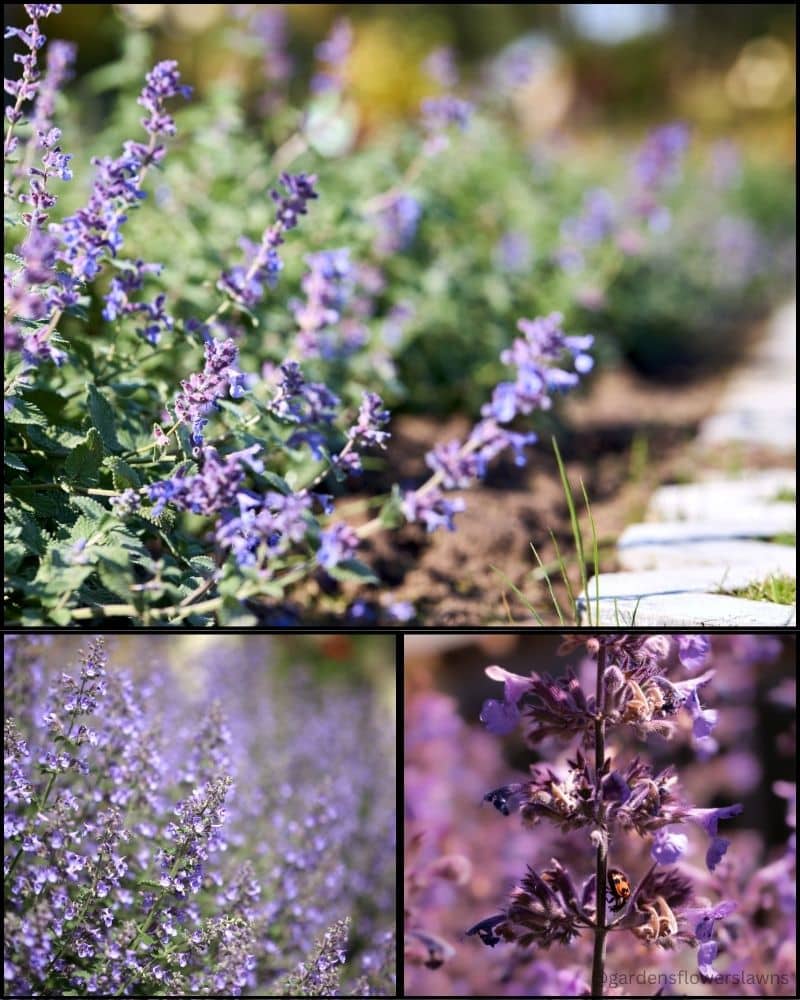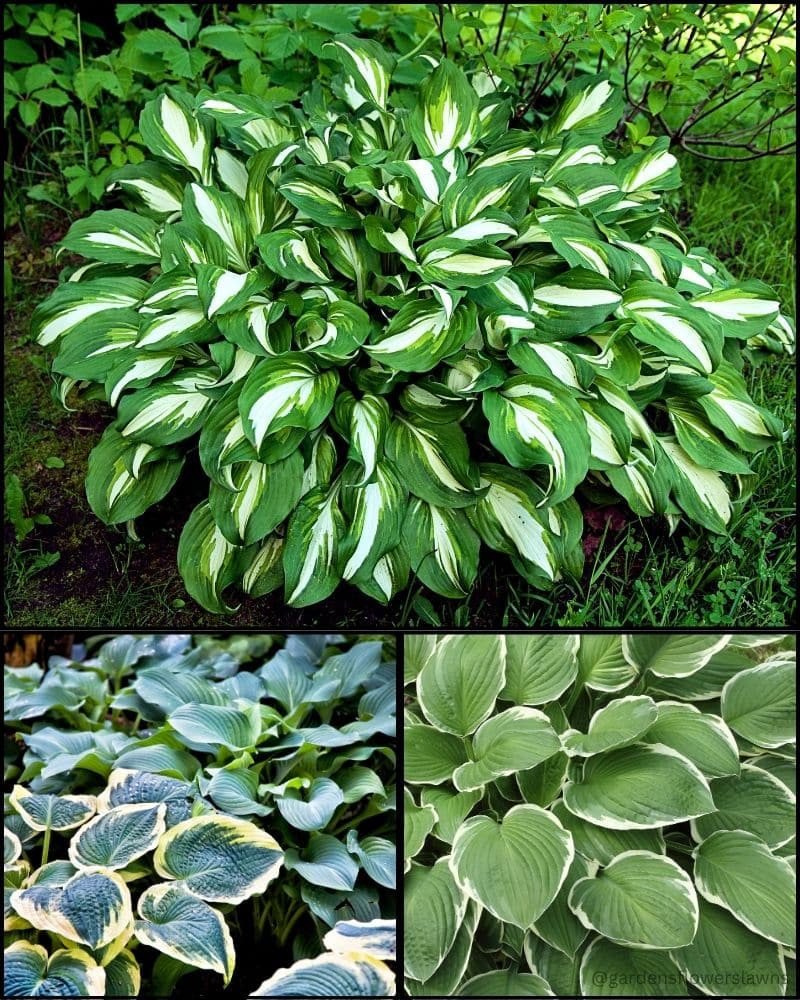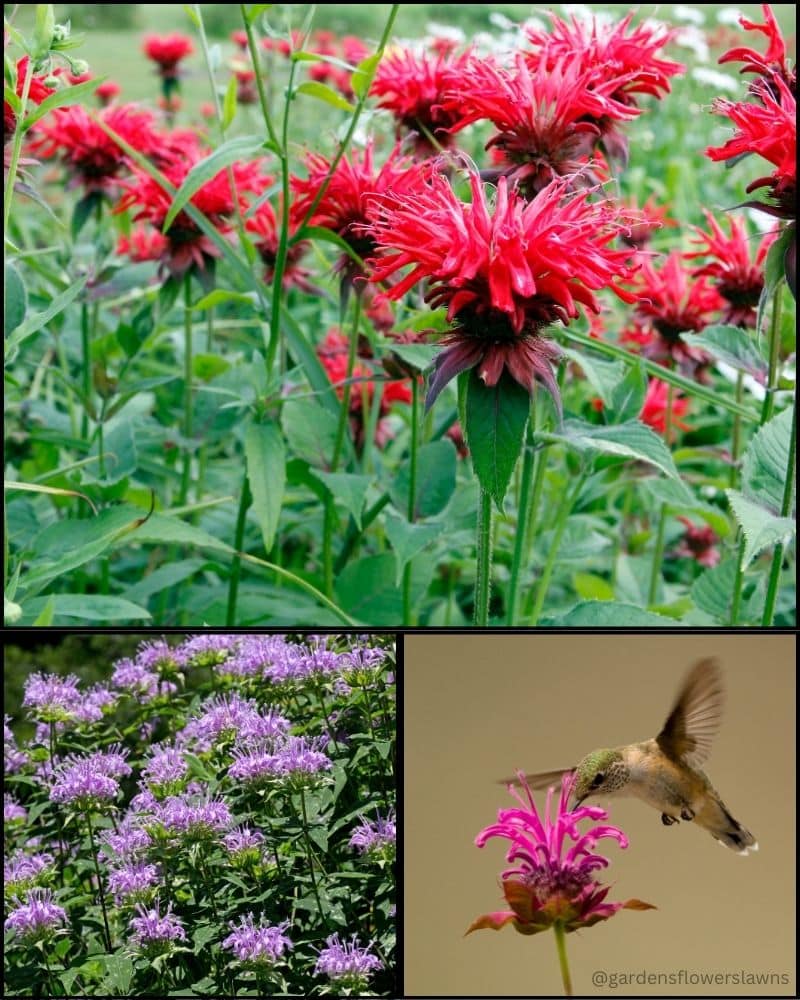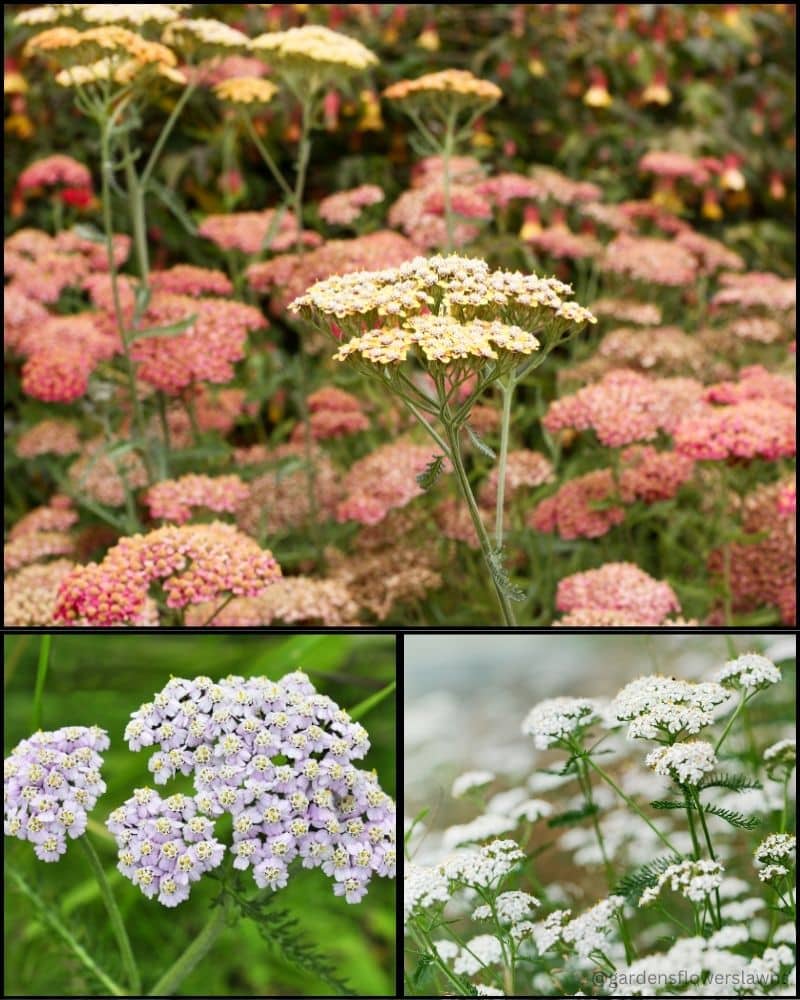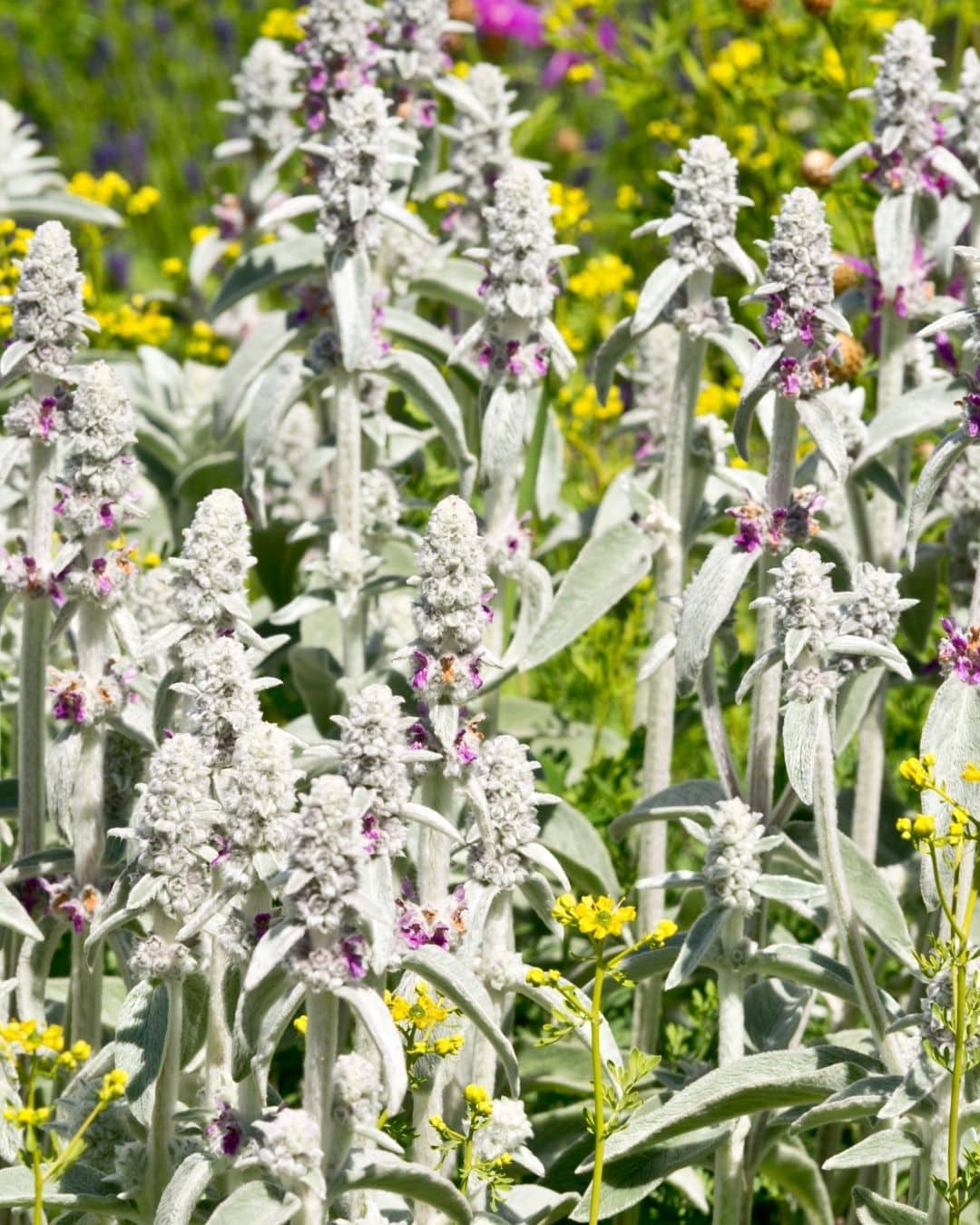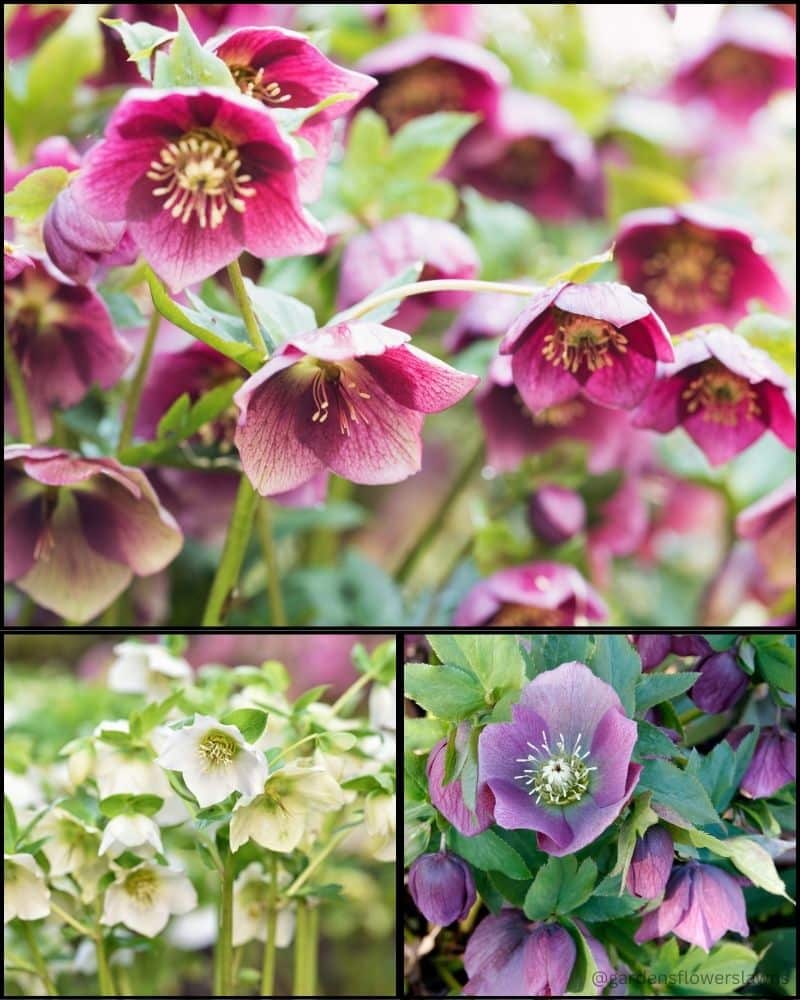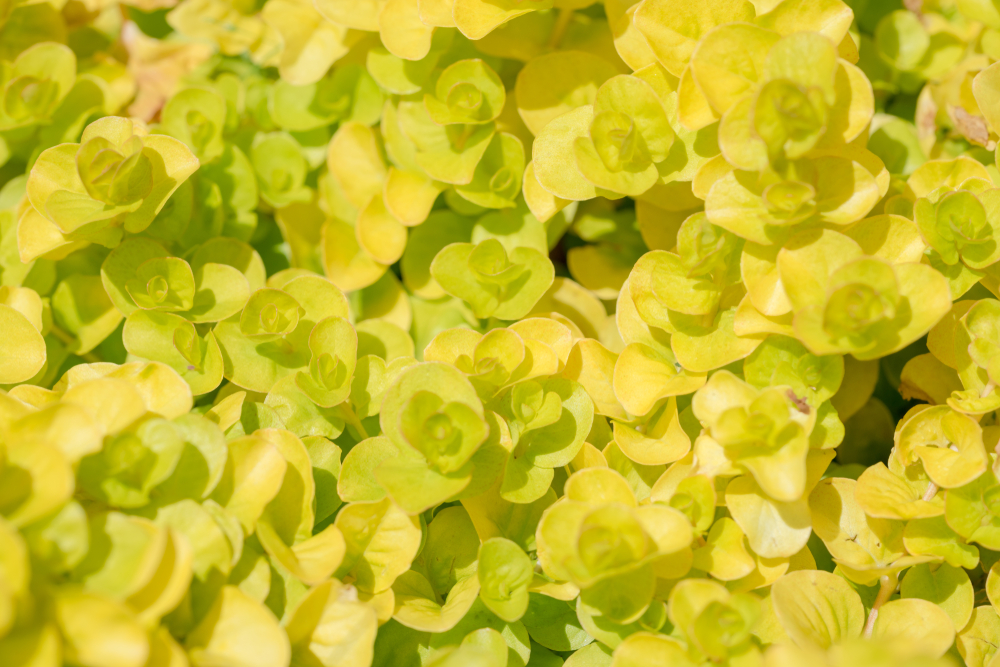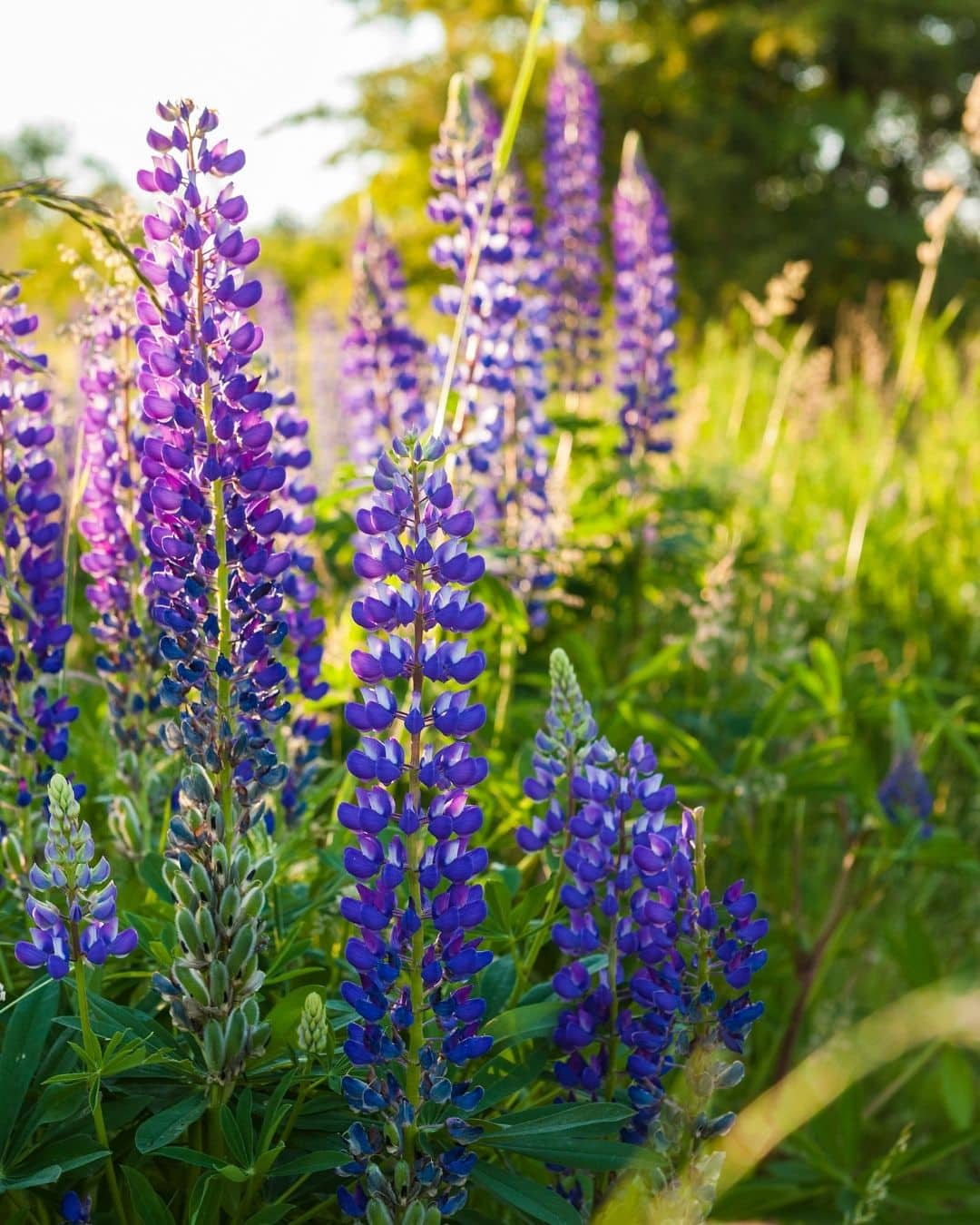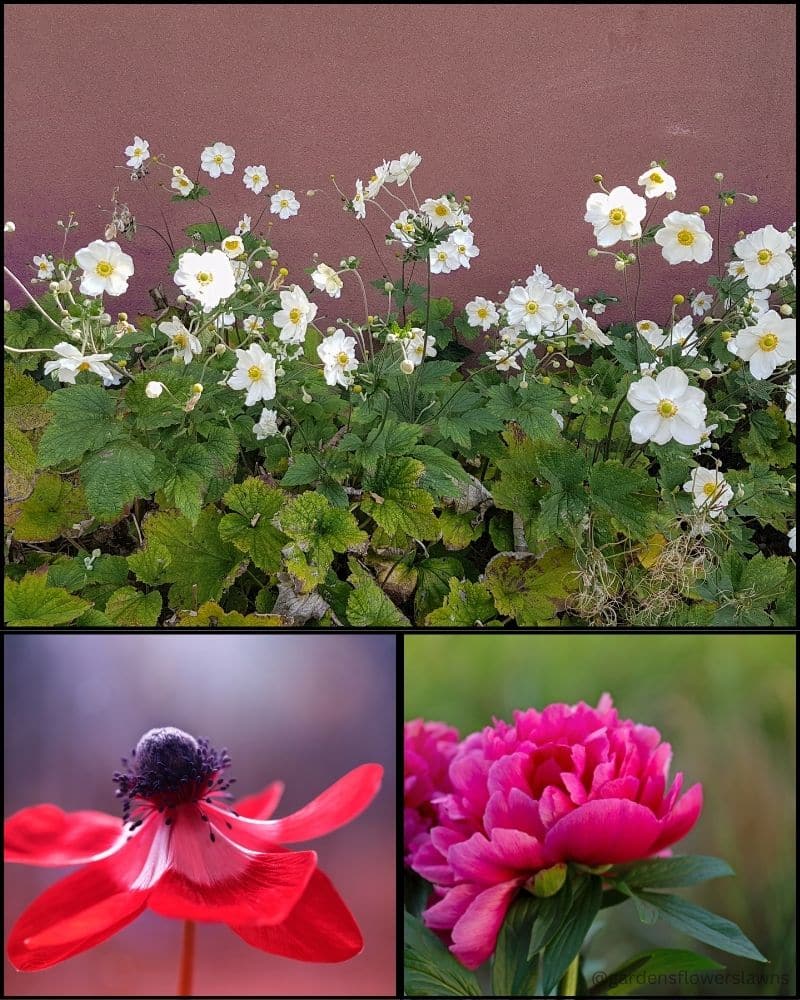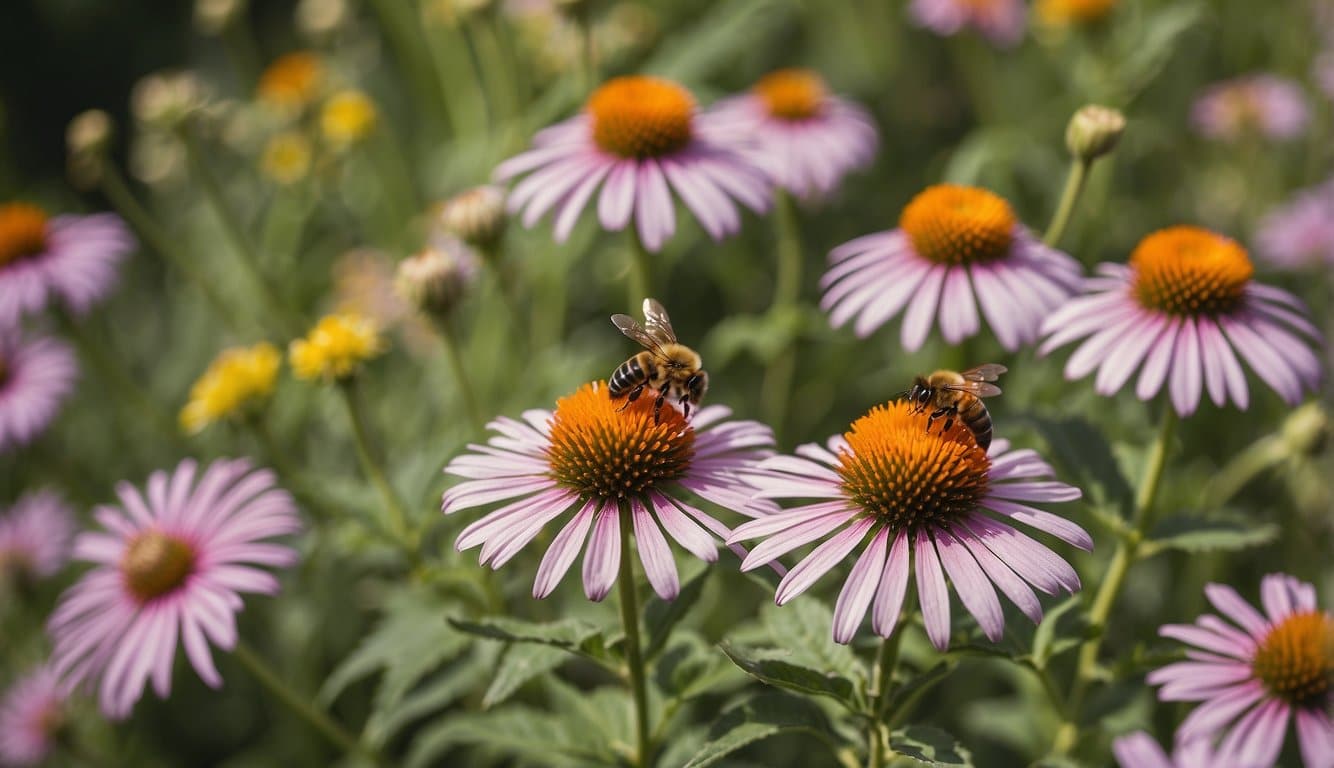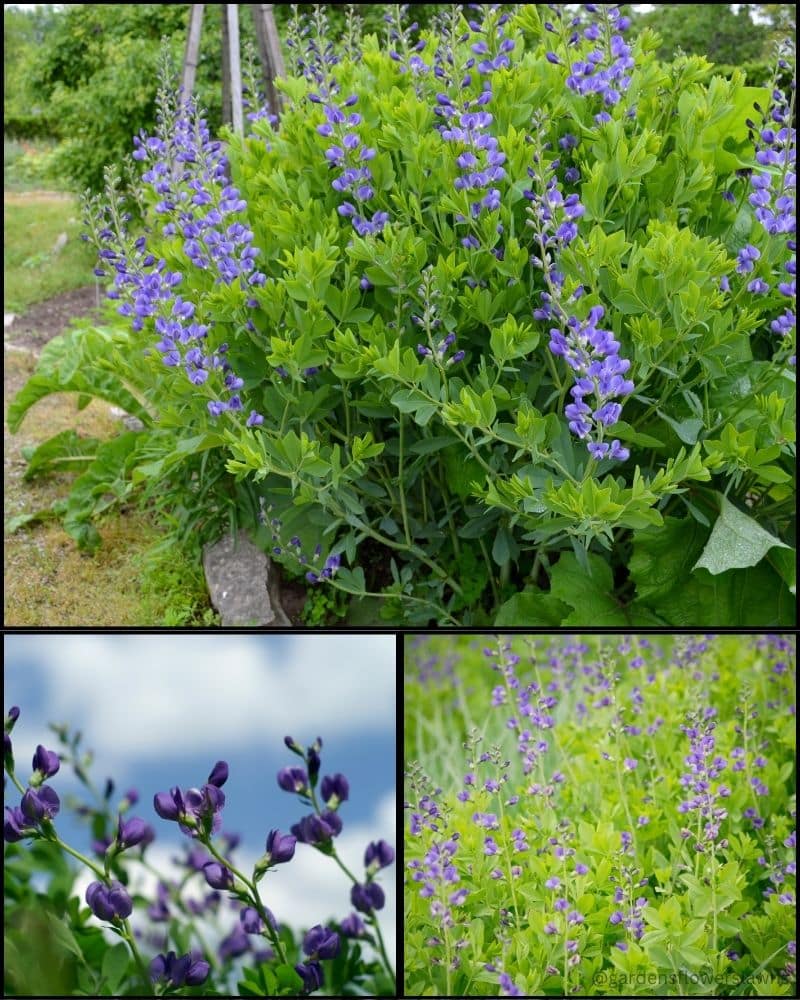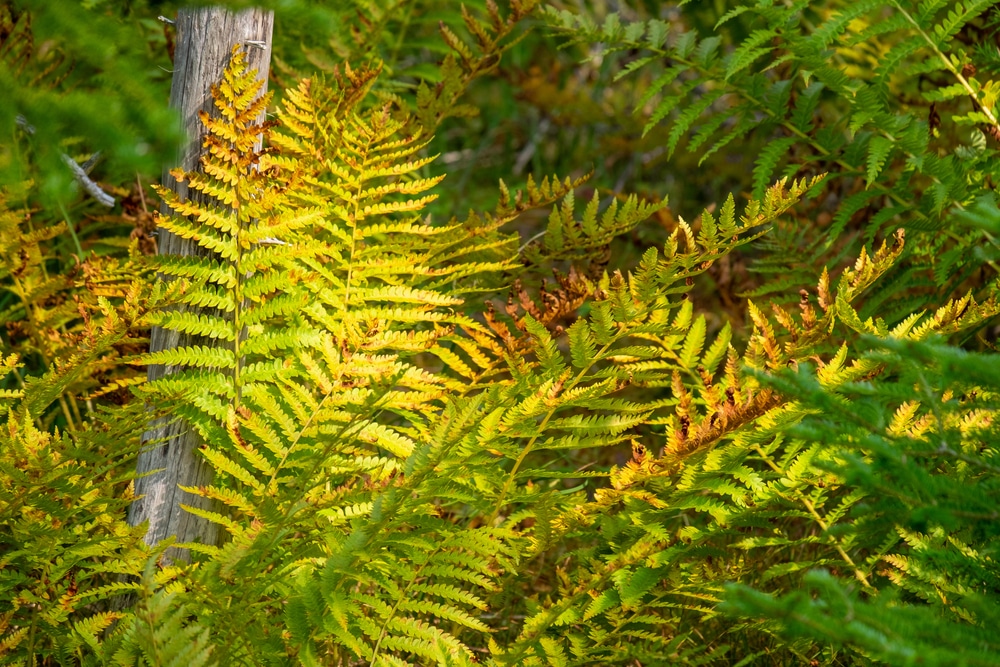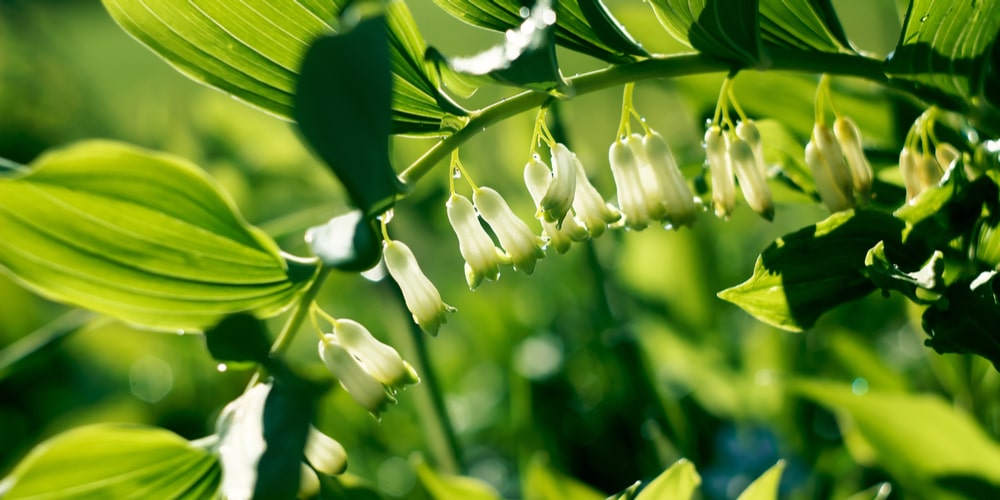Gardening should be about enjoying blooms, not constant transplanting. These reliable perennials spread happily on their own—no green thumb required.
From sturdy daylilies that carpet borders in fiery color to delicate hellebores that peek through late‑winter gray, each of these plants takes care of its own propagation.
OK. Let’s get to it!
Daylilies (Hemerocallis)
Daylilies are the go-to choice for gardeners who want a splash of color with almost zero fuss. Their strap-like foliage sends up multiple bloom stalks throughout summer, and they thrive in a wide range of soil types.
-
Hardiness Zones: 3–9
-
Light: Full sun to partial shade
-
Plant with: Iris, ornamental grasses
-
Tips & Locations: Divide every 3–4 years; great in borders, mass plantings, and containers
Coneflower (Echinacea)
With sturdy stems and daisy-like blooms, coneflowers bring long-lasting color and attract bees and butterflies. They tolerate heat and drought, making them reliable performers in mixed beds.
-
Hardiness Zones: 3–8
-
Light: Full sun
-
Plant with: Black‑eyed Susan, yarrow
-
Tips & Locations: Deadhead to prolong bloom; ideal in wildflower meadows and patio pots
Black‑Eyed Susan (Rudbeckia)
These golden flowers with dark centers light up the garden from midsummer into fall. They’re low-maintenance and reseed easily, ensuring you’ll have cheerful blooms year after year.
-
Hardiness Zones: 3–9
-
Light: Full sun
-
Plant with: Coreopsis, coneflower
-
Tips & Locations: Cut back after flowering to encourage a second flush; works well in cottage borders and along walkways
Phlox (Phlox spp.)
Phlox delivers fragrant clusters of blooms that stand out in sunny beds or along paths. Both tall and spreading varieties offer options for color through summer and beyond.
-
Hardiness Zones: 4–8
-
Light: Full sun to partial shade
-
Plant with: Shasta daisy, salvia
-
Tips & Locations: Provide good air circulation to prevent mildew; perfect for beds, borders, and rock gardens
Sedum (Sedum spp.)
Succulent leaves and star-shaped flowers make sedum a drought-tolerant standout. They finish the season with late-summer blooms that appeal to pollinators.
-
Hardiness Zones: 3–9
-
Light: Full sun
-
Plant with: Ornamental grasses, asters
-
Tips & Locations: Cut back stems in spring; ideal for containers, rockeries, and edging
Coreopsis (Coreopsis spp.)
Coreopsis lives up to its nickname, “tickseed,” by sprinkling bright yellow or pink blooms across sunny spots. It’s carefree and blooms heavily with minimal feeding.
-
Hardiness Zones: 4–9
-
Light: Full sun
-
Plant with: Black‑eyed Susan, salvia
-
Tips & Locations: Deadhead for continuous blooms; great in mixed borders and wildflower gardens
Catmint (Nepeta)
Soft gray-green foliage and lavender-blue blooms make catmint a fragrant, long-blooming favorite. It’s deer-resistant and thrives with little attention.
-
Hardiness Zones: 3–9
-
Light: Full sun
-
Plant with: Roses, lavender
-
Tips & Locations: Shear back after first bloom to promote a second wave; well‑suited for edging and containers
Hostas (Hosta spp.)
Hostas turn shady corners into lush displays with broad, textured leaves. Varieties range from compact mounds to dramatic large-leafed specimens.
-
Hardiness Zones: 3–9
-
Light: Shade to partial shade
-
Plant with: Ferns, astilbe
-
Tips & Locations: Divide every 3–4 years; perfect under trees, along paths, and in large containers
Bee Balm (Monarda)
Vibrant, tubular flowers and minty-scented foliage make bee balm a pollinator magnet. It spreads by rhizomes, so you’ll quickly fill gaps in your garden.
-
Hardiness Zones: 4–9
-
Light: Full sun to partial shade
-
Plant with: Coneflower, yarrow
-
Tips & Locations: Divide clumps every 2–3 years; thrives in borders and cut‑flower beds
Yarrow (Achillea)
Yarrow’s feathery foliage and flat-topped blooms add texture to any sunny garden. It handles poor soil and drought with ease, plus its blooms dry beautifully.
-
Hardiness Zones: 3–9
-
Light: Full sun
-
Plant with: Sedum, coreopsis
-
Tips & Locations: Cut spent flower stems to encourage rebloom; great in rock gardens and along edges
Lamb’s Ear (Stachys byzantina)
Soft, silvery leaves create a carpet of texture and contrast. Lamb’s ear is drought-tolerant and perfect for adding tactile interest near walkways.
-
Hardiness Zones: 4–9
-
Light: Full sun to partial shade
-
Plant with: Salvia, ornamental grasses
-
Tips & Locations: Trim brown leaves in spring; ideal for borders and containers
Hellebores (Helleborus spp.)
Also called Lenten rose, hellebores bloom in late winter or early spring, offering early color when little else is awake. Their evergreen foliage stays attractive year-round.
-
Hardiness Zones: 4–9
-
Light: Partial to full shade
-
Plant with: Ferns, hostas
-
Tips & Locations: Remove old leaves before new growth; perfect at the front of shady borders
Chives (Allium schoenoprasum)
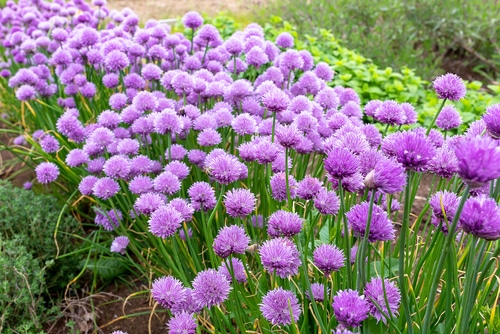
Chives bring edible appeal with edible, onion‑flavored leaves and purple flower balls. They naturalize quickly, making them a charming herb and ornamental.
-
Hardiness Zones: 3–9
-
Light: Full sun to partial shade
-
Plant with: Parsley, dill
-
Tips & Locations: Divide every few years; use in containers, herb gardens, and edging
Creeping Jenny (Lysimachia nummularia)
Vibrant chartreuse foliage makes creeping Jenny an eye-catching groundcover. It trails beautifully from containers or spreads to fill moist areas.
-
Hardiness Zones: 3–9
-
Light: Part shade to full sun (morning sun best)
-
Plant with: Ferns, hostas
-
Tips & Locations: Trim back runners to control spread; works in pots, hanging baskets, and pathways
Lupines (Lupinus)
Tall spires of pea‑like blossoms add vertical drama in shades of blue, pink, and white. Lupines self‑seed in cool climates for a cottage‑garden feel.
-
Hardiness Zones: 4–7
-
Light: Full sun to partial shade
-
Plant with: Delphinium, roses
-
Tips & Locations: Stake taller varieties; ideal for back of border and wildflower patches
Japanese Anemone (Anemone hupehensis)
Fall‑blooming Japanese anemones bring delicate petals on slender stems, extending color into autumn. They multiply with underground runners for fuller drifts each year.
-
Hardiness Zones: 4–8
-
Light: Partial shade
-
Plant with: Asters, ferns
-
Tips & Locations: Divide clumps every 3–4 years; great in woodland gardens and shade borders
Purple Coneflower (Echinacea purpurea)
Similar to its cousin coneflower, this variety has pink‑purple petals around a raised cone. It’s rugged, drought‑tolerant, and a top pick for pollinator-friendly gardens.
-
Hardiness Zones: 3–9
-
Light: Full sun
-
Plant with: Black‑eyed Susan, bee balm
-
Tips & Locations: Leave seedheads for winter interest and birds; perfect for meadows and sunny beds
Baptisia (Baptisia spp.)
False indigo features pea‑type flowers on sturdy stems and blue‑green foliage that holds color through summer. It’s long‑lived and rarely needs dividing.
-
Hardiness Zones: 3–8
-
Light: Full sun to partial shade
-
Plant with: Alliums, ornamental grasses
-
Tips & Locations: Allow pods to form for fall texture; works well in perennial borders and cut‑flower gardens
Ferns (Various hardy species)
Hardy ferns introduce feathery foliage and lush green tones into shady spots. Their clumping habit fills in under trees or along moist borders.
-
Hardiness Zones: 3–8
-
Light: Shade to partial shade
-
Plant with: Hostas, hellebores
-
Tips & Locations: Keep soil evenly moist; perfect for woodland borders and shaded containers
Solomon’s Seal (Polygonatum)
Graceful arching stems with dangling white bells bring elegance to shade gardens. Solomon’s seal spreads slowly by rhizome to form quietly beautiful drifts.
-
Hardiness Zones: 3–8
-
Light: Full to partial shade
-
Plant with: Ferns, hostas
-
Tips & Locations: Cut back after foliage yellows; ideal for shady edges and beneath trees
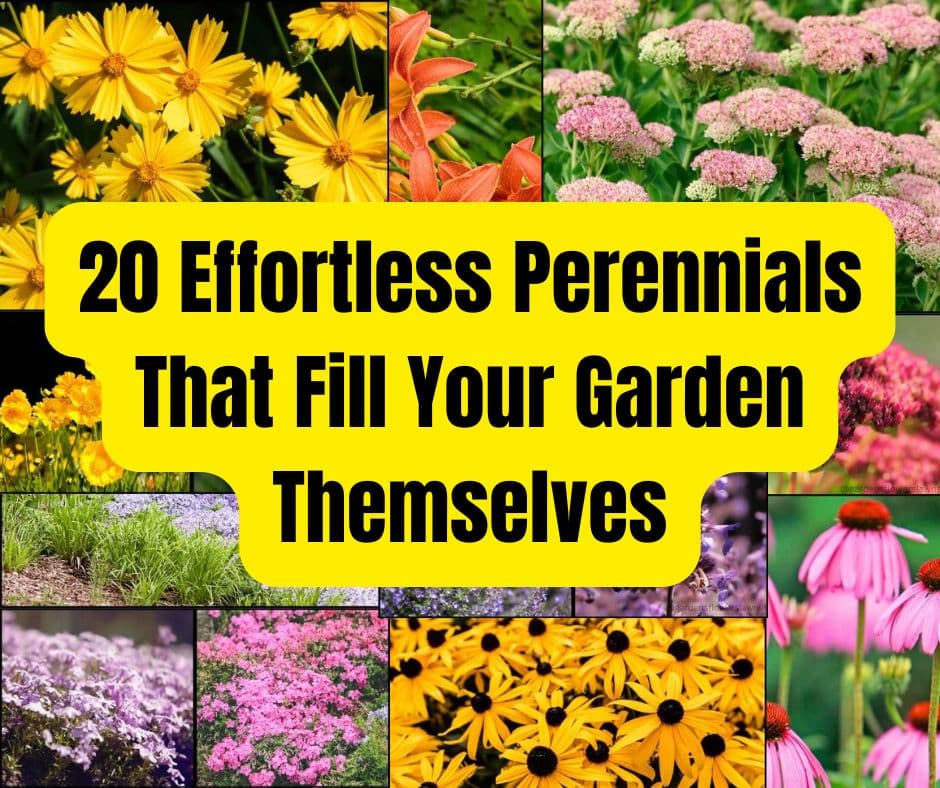
Experiment with combinations that balance texture, bloom time, and height—and watch your beds come alive with minimal extra work.
